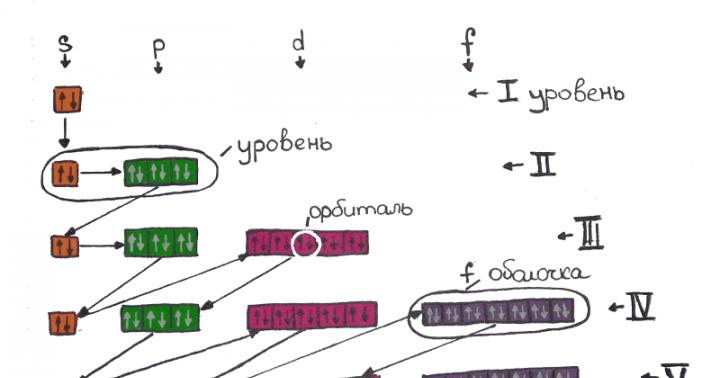When creating self-powered devices, care must be taken to protect the battery from deep discharge. It is enough to miss the moment once and allow the battery to be deeply discharged below the minimum voltage threshold and your battery will fail, or will lose part of its capacity and will be unable to operate at rated load currents.
In order to prevent cases of voltage drop below a critical level in the open circuit of the battery-consumer, protection circuits are installed, which consist of several units:
comparator and power switch.
Requirements for the protection circuit:
- low leakage current (self-consumption)
- switching currents comparable to the maximum permissible for the battery
This battery deep discharge protection circuit was assembled to protect a 6 volt acid-gel battery with a capacity of 4 ampere-hours, but it can also be configured to work with 12 volt batteries and higher, up to the supply voltage of the ne7555 chip. The prototype of this board was found in some magazine and slightly modified. Instead of a conventional zener diode, an adjustable zener diode TL431 was introduced, which allows you to adjust the cutoff voltage (load disconnection) in conjunction with adjusting the resistive divider R6/R7. From the 3rd leg of the 555 timer chip, the signal no longer illuminates the LED, but opens npn transistor, which in turn opens the power switch N-channel field-effect transistor. Pay your attention to the characteristics of this transistor, it must be designed to work with the expected load currents, and another important detail is gate opening voltage. If you are planning a circuit for a 6-volt battery, you need a field-effect transistor with an opening voltage of 5 volts n-channel logic level mosfet. Field-effect transistors for “general power” purposes with an opening voltage of 10-20 volts will not suit you, since when the voltage between the gate and source of the transistor is 5 volts, they will not be in saturation mode but in linear mode, which will lead to strong heat generation and failure .
I wanted to solder something... Don’t deny yourself such pleasure :)
The background is this. I’m assembling a quadcopter :) Needed good batteries: large capacity, good current output, lightweight. Those. lithium-ion. A couple of batteries were purchased and it was decided to test them. Lately I have been checking everything I buy in China. It is much better to assemble the device from known good parts: firstly, there is time to re-order the part if it arrives dead, and secondly, it is easier to check the element on the table than in the device and you will not have to rip it out of the bowels if something happens. Input control is correct!
So, I check my batteries and find that they show a capacity noticeably less than declared. Well, it happens that they lay in a warehouse and all that (although the voltage was normal and this should have raised alarm bells). I remember that batteries can be “trained”, i.e. carry out several discharge-charge cycles and then the capacity can be restored.
I put one battery on the iMax B6 charger, which can automatically control the discharge and charge processes. The process is long... what to do with the second one? Yeah, a thought! Let me light it up the old fashioned way, with a light bulb! Yes, I know that lithium-ion batteries cannot be discharged below about 3 Volts per cell (“cell”), but I have a tester, I will monitor the voltage directly at the balancing connector... In general, bad idea. Of course, I got carried away and drained the battery to zero 🙁
I thought it was no big deal. Past experience with nickel-cadmium suggests that full discharge is bad, but not fatal. But no! My battery only needed one time for one cell out of three to swell and die (I had to amputate it and now I have a 2S battery). Those. lithium ion battery It’s not just impossible to discharge below 3V per element, but absolutely, completely impossible!
So, we think further. Not all devices, especially homemade ones, have a controller that will prevent the battery from being discharged to a dangerous level. This means that you need some kind of device that will monitor the voltage and warn if something happens. Modelers all over the world are laughing out loud at me for such a fresh idea 😀
How to do it? The thought flowed into some damp distances, towards a circuit on a microcontroller with element-by-element control of the battery... And then a video caught my eye, in which a very simple analog circuit was proposed that turns off the power when the voltage drops below a given threshold. True, it only monitors the overall voltage on the battery and does not control individual “banks”…. but we charge our battery honestly, on a balancing charger, so when working it is enough to know the total voltage.
While I'm thinking, the Chinese are acting! And then one of them screwed up, instead of the ordered “crank” (L7805), he sent powerful MOS transistors (aka MOSFETs). Well... since so many things have come together, it’s time to take up the soldering iron :)
Yes, the scheme is valid. But there is a nuance (c). It has a start button. Those. To turn on the load, you need to apply voltage and briefly press the button. Inconvenient: two actions instead of one. I want it without a button!
A device for protecting 12v batteries from deep discharge and short circuit with automatic disconnection of its output from the load.
CHARACTERISTICS
The battery voltage at which the shutdown occurs is 10± 0.5V. (I got exactly 10.5 V) The current consumed by the device from the battery when turned on is no more than 1 mA. The current consumed by the device from the battery when turned off is no more than 10 µA. The maximum permissible direct current through the device is 5A. (30 Watt light bulb 2.45 A - Mosfit without radiator +50 degrees (room +24))
The maximum permissible short-term (5 sec) current through the device is 10A. Shutdown time at short circuit at the device output, no more than - 100 μs

OPERATING ORDER OF THE DEVICE
Connect the device between the battery and the load in the following sequence:
- connect the terminals on the wires, observing the polarity (orange wire + (red), to the battery,
- connect to the device, observing the polarity (the positive terminal is marked with a + sign), the load terminals.


In order for voltage to appear at the output of the device, you need to briefly short-circuit the negative output to the negative input. If the load is powered by another source besides the battery, then this is not necessary.
THE DEVICE OPERATES AS FOLLOWS;
When switching to battery power, the load discharges it to the response voltage of the protection device (10± 0.5V). When this value is reached, the device disconnects the battery from the load, preventing further discharge. The device will turn on automatically when voltage is supplied from the load side to charge the battery.



If there is a short circuit in the load, the device also disconnects the battery from the load. It will turn on automatically if a voltage of more than 9.5V is applied from the load side. If there is no such voltage, then you need to briefly bridge the output negative terminal of the device and the negative terminal of the battery. Resistors R3 and R4 set the response threshold.
Spare parts
1. Mounting board (optional, can be mounted)
2. Field-effect transistor any, choose according to A and B. I took RFP50N06 N-channel 60V 50A 170 deg
3. Resistors 3 for 10 com, and 1 for 100 com
4. Bipolar transistor KT361G
5. Zener diode 9.1 V
Add. You can use terminals + Mikrik for starting. (I didn’t do it myself because it will be part of another device)
6. You can have an LED at the input and output for clarity (Select a resistor, solder in parallel)

Soldering iron + tin + alcohol rosin + wire cutters + wiring + multimeter + load, etc. and so on. Soldered using the tin-nozzle method. I don't want to poison the board. There is no layout. Load 30 Watt, Current 2.45 A, the field worker heats up to +50 degrees (room temperature +24). No cooling needed.

I tried a load of 80 watts... VAH-VAH. Temperature over 120 degrees. The tracks began to turn red... Well, you know, you need a radiator, Well-soldered tracks.

How often do we forget to turn off the load from the battery... Have you ever thought about this question... But it often happens that the battery seems to be working and working, but then something has dried up... We measure the voltage on it, and there is 9-8V, or even less. Bag, restore battery You can try, but it doesn't always work.
For this reason, a device was invented that, when the battery is discharged, will disconnect the load from it and prevent deep discharge of the battery, because it is no secret that batteries are afraid of deep discharge.
To be honest, I thought many times about a device for protecting the battery from deep discharge, but it was never my destiny to try everything. And over the weekend I set a goal to make a small protection circuit
Battery protection circuit full discharge
Any Start and Stop buttons without fixing
Let's look at the diagram. As you can see, everything is built on two op-amps switched on in comparator mode. LM358 was taken for the experiment. And so let's go...
The reference voltage is formed by the R1-VD1 chain. R1 is a ballast resistor, VD1 is a simple 5V zener diode, it can be used for higher or lower voltage. But not more than and not equal to the voltage of a discharged battery, which by the way is equal to 11V.
A comparator was assembled on the first op-amp, comparing the reference voltage with the battery voltage. The voltage to the 3rd leg is supplied from the battery through a resistor divider, which creates the compared voltage. If the voltage on the divider is equal to the reference one, a positive voltage appears on the first leg, which opens the transistors, which are installed as an amplifier stage, so as not to load the output of the op-amp.
Everything is set up simply. We supply 11V to the Out terminal. It is on this leg, because the diode drops by 0.6V and then you will have to rebuild the circuit. A diode is needed so that when you press the start button, the current does not go to the load, but supplies voltage to the circuit itself. By selecting resistors R2R6, we catch the moment when the relay turns off, the voltage on the 7th leg disappears, and on the 5th leg the voltage should be slightly less than the reference
When the first comparator has been built, we apply 12V voltage, as expected, to the Vcc terminal and press Start. The circuit should turn on and operate without problems until the voltage drops to 10.8V, the circuit should turn off the load relay.
Press Stop, the voltage on the 5th leg will disappear and the circuit will turn off. By the way, it is better not to set C1 to a higher value, since it will take a long time to discharge and you will have to hold the STOP button longer. By the way, I haven’t yet figured out how to force the circuit to turn off immediately if there is a good capacitance on the load itself, which will take longer to discharge, although you can throw a ballast resistor on the condenser itself
At the second Op, it was decided to assemble an indicator indicating when the battery is almost discharged and the circuit should turn off. It is configured in the same way... We supply 11.2V to Out and select R8R9 to ensure that the red LED lights up
This completes the setup and the circuit is fully operational...

Good luck everyone with your repetition...
For safe, high-quality and reliable charging of any types of batteries, I recommend
In order not to miss the latest updates in the workshop, subscribe to updates in In contact with or Odnoklassniki, you can also subscribe to email updates in the column on the right
Don’t want to delve into the routine of radio electronics? I recommend paying attention to the proposals of our Chinese friends. For a very reasonable price you can purchase quite high-quality chargers
A simple charger with an LED charging indicator, green battery is charging, red battery is charged.
There is short circuit protection and reverse polarity protection. Perfect for charging Moto batteries with a capacity of up to 20A/h; a 9A/h battery will charge in 7 hours, 20A/h in 16 hours. The price for this charger is only 403 rubles, free delivery
This type of charger is capable of automatically charging almost any type of 12V car and motorcycle batteries up to 80A/H. Has a unique charging method in three stages: 1. Charging DC, 2. Charging constant voltage, 3. Drop recharging up to 100%.
There are two indicators on the front panel, the first indicates the voltage and charging percentage, the second indicates the charging current.
Quite a high-quality device for home needs, the price is just RUR 781.96, free delivery. At the time of writing these lines number of orders 1392, grade 4.8 out of 5. Eurofork
Charger for a wide variety of battery types 12-24V with current up to 10A and peak current 12A. Able to charge Helium batteries and SA\SA. The charging technology is the same as the previous one in three stages. The charger is capable of charging both automatic mode, and manually. The panel has an LCD indicator indicating voltage, charging current and charging percentage.
A good device if you need to charge all possible types of batteries of any capacity, up to 150Ah
The price for this miracle 1,625 rubles, delivery is free. At the time of writing these lines, the number 23 orders, grade 4.7 out of 5. When ordering, do not forget to indicate Eurofork
If any product has become unavailable, please write in the comment at the bottom of the page.
Author of the Article: Admin check
A simple device consisting of only two transistors will help every car owner protect their car’s battery from complete discharge. This is especially true for those whose cars are not equipped with a headlight warning light.
Device characteristics.
- Shutdown voltage - 10±0.5V.
- The maximum current of the operating device is 1 mA.
- The maximum current of a disconnected device is 10 µA.
- The maximum permissible current passing through the device is 5A.
- Short-term current – 10 A (no longer than 5 seconds).
- The response time for a short circuit in the load is no more than 100 μs.
Electrical diagram.
The operation is based on an N-channel field-effect transistor, for example, RFP50N06, which acts as a “key”. When the supply voltage drops to 10.5 V, the protection is triggered and the battery is disconnected from the load. When charging voltage is applied, automatic switching on devices.
Another function that the circuit performs is short circuit protection.
The circuit is very simple and contains a minimum number of radio elements, so its repetition does not necessarily require the manufacture of a printed circuit board. If all the necessary parts are available, in less than half an hour, assembly can be carried out on a special mounting plate or using surface mounting.
Given the high currents passing through the device, soldering must be done carefully. It is advisable to attach the MOSFET transistor to the radiator to prevent it from overheating and failure.
The setup comes down to selecting resistances R3 and R4, which are responsible for the response threshold (the higher their value, the more sensitive the circuit).
SW – micro switch without fixation, small dimensions, for switching on protection. If desired, you can not use it by activating the device by short-circuiting the (-) terminal of the battery with the “minus” output.
List necessary spare parts and their estimated cost:
- Field effect transistor – 1 piece (60 rubles) – RFP50N06 N-channel 60V 50A 170 deg
- Transistor KT 361 – 1 piece (5 rubles).
- Low-power resistors – 4 pcs (1 rub each) – 3 for 10 kOhm, and 1 for 100 kOhm
- Zener diode – 1 piece – 6 rubles
Thus, if you do not take into account the price of Consumables(solder, electricity for a soldering iron), the cost of such an electronic protective device is less than 75 rubles.
Simple monoblock car amplifier based on TDA1560Q  Automotive throttleless power supply based on IRS2153 for laptops and mobile phones External USB connector in car radio
Automotive throttleless power supply based on IRS2153 for laptops and mobile phones External USB connector in car radio


